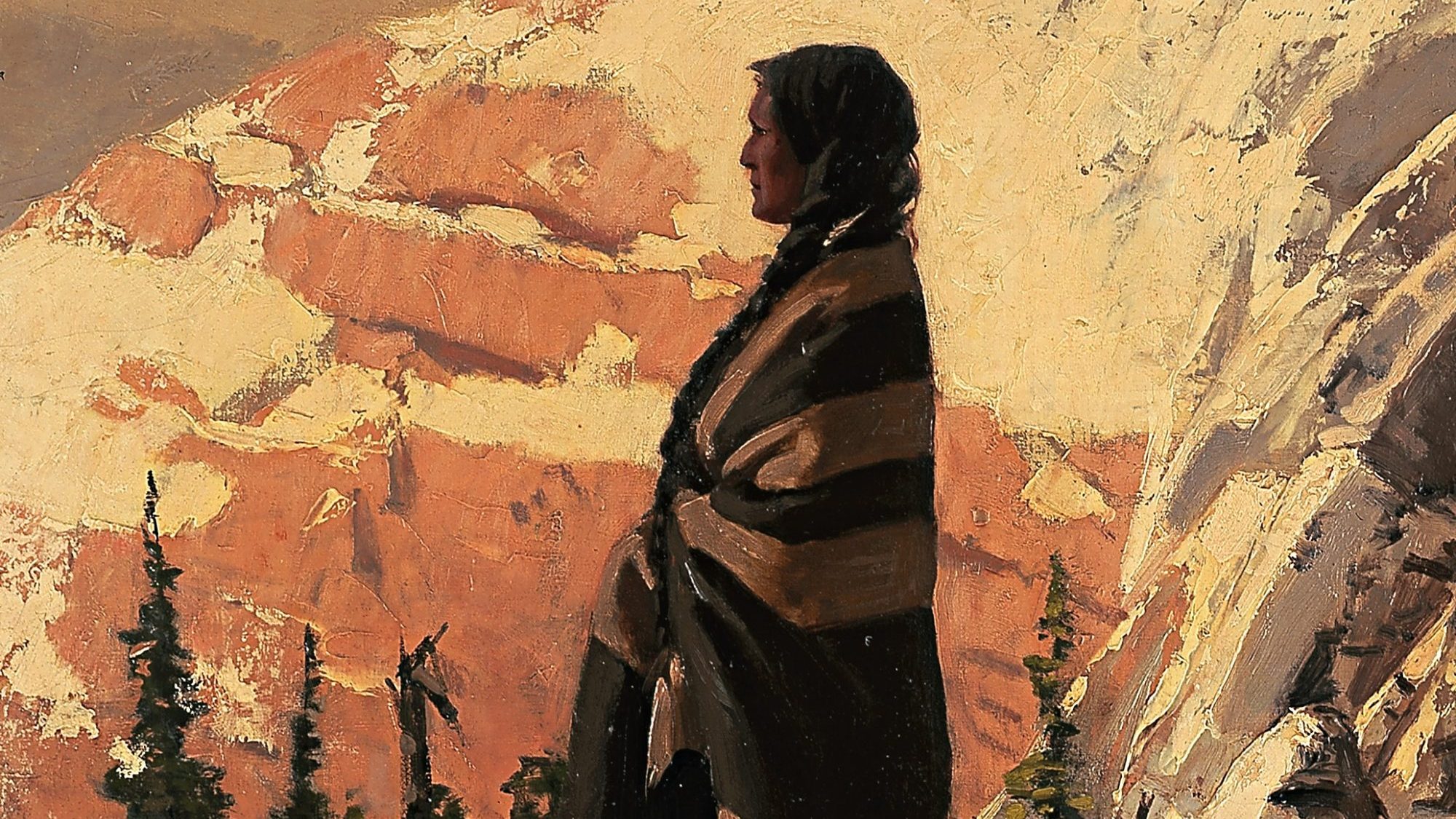
Visions of the American West
CHAPTER 1: Introduction
Chapters
Spanning over a century, the Blanton’s collection of Western art features a range of perspectives, including romanticized images of both the American cowboy and Native American cultures. Many of the artists subscribed to the nineteenth-century doctrine of Manifest Destiny—the belief that the U.S. was predestined to expand across the entire continent. Painter Albert Bierstadt, for example, described the frontier land as “a wellspring of amazement and wonder…an American Garden of Eden.” Such enthusiastic accounts and idealized images encouraged waves of new settlers, even as Bierstadt and many of his contemporaries glorified Native cultures as vestiges of an untouched, preindustrial world. Other artists documented the displacement of Native American nations—the result of U.S. government forces and the territorial expansion. The majority of the Blanton’s holdings of art of this genre comes from the celebrated collection of UT Austin alumnus C.R. Smith. Beginning in 1972, Smith gave the Blanton (then the Archer M. Huntington Art Gallery) nearly one hundred paintings, sculptures, and works on paper primarily devoted to western subjects.
Image credit:
William Gilbert Gaul
The Land of the Free, circa 1900 (detail)
Oil on canvas
The Blanton Museum of Art, The University of Texas at Austin
Gift of C.R. Smith, 1976

